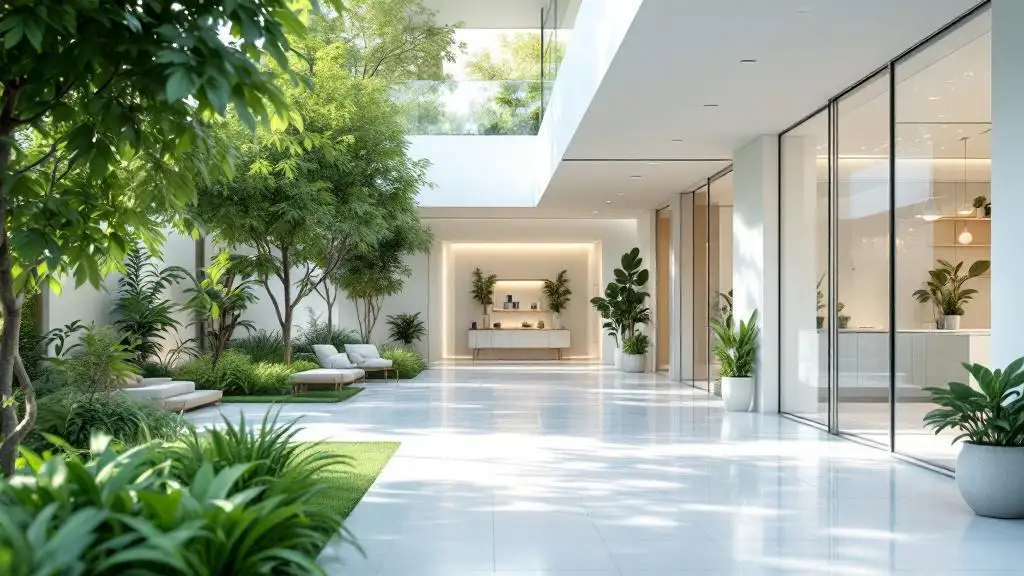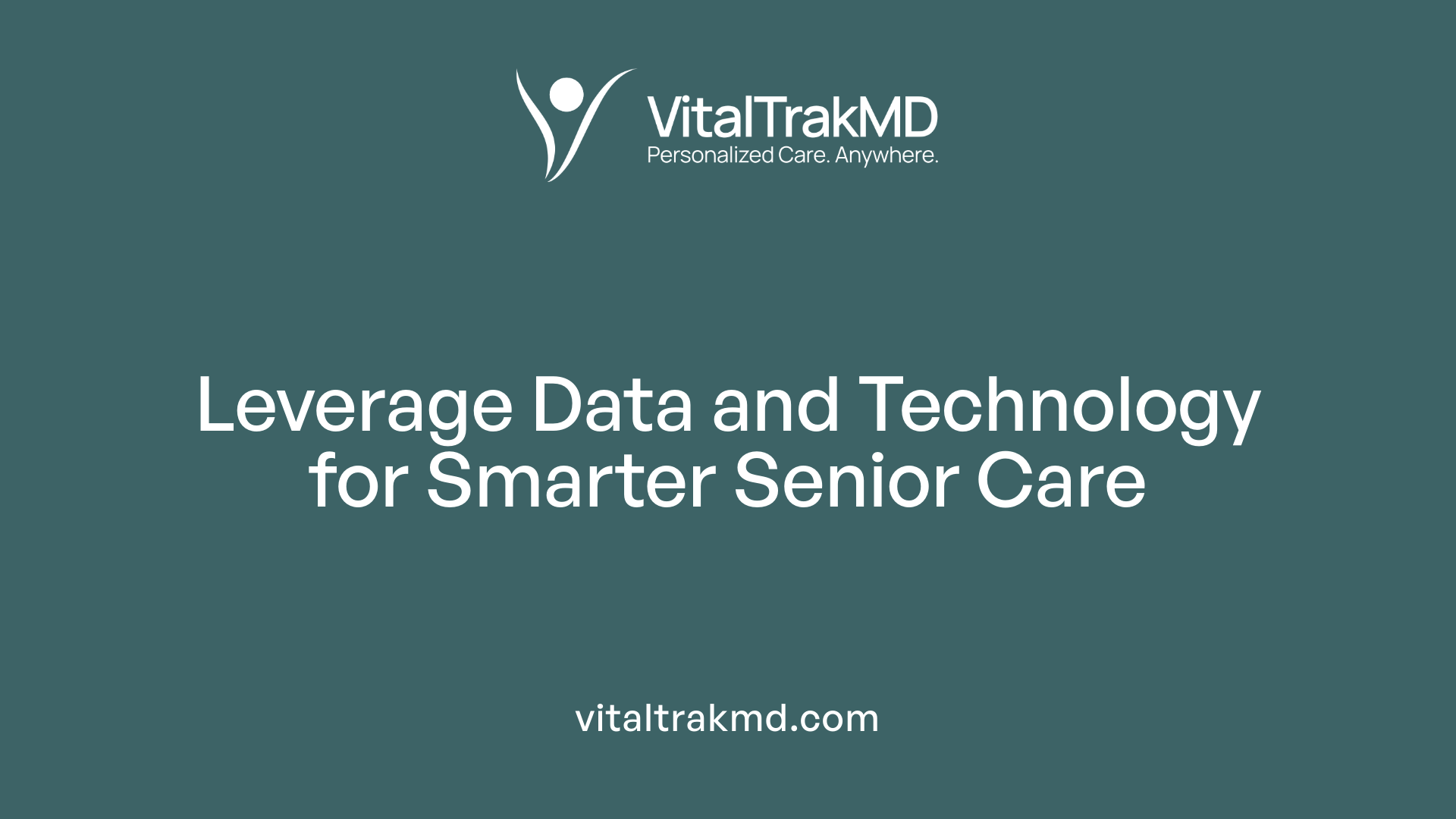Moving from Reactive to Proactive Senior Healthcare Models

The Shift Toward Prevention in Senior Healthcare
Healthcare is undergoing a fundamental transformation from reactive treatments to proactive prevention, especially for senior populations. This transition is driven by scientific innovations, technological advances, and a growing recognition that early intervention and personalized care can vastly improve health outcomes, reduce costs, and enhance quality of life for aging individuals. As the demographic landscape shifts with an increasing number of older adults worldwide, understanding and implementing proactive healthcare models is crucial for creating sustainable, effective aging care systems.
Understanding Proactive Healthcare: From Concept to Practice

What is proactive healthcare?
Proactive healthcare is an approach aimed at preventing diseases and promoting overall wellness through early detection, regular screenings, vaccinations, and healthy lifestyle choices. It emphasizes continuous health management, patient education, and the early use of diagnostic tools such as scans and wearable devices. This model encourages active participation from individuals in maintaining their health, recognizing the interconnectedness of physical and mental well-being. By focusing on prevention rather than solely reacting to illness, proactive healthcare seeks to enhance quality of life, extend lifespan, and reduce long-term healthcare costs.
What are the benefits of proactive healthcare for seniors?
Proactive healthcare offers significant advantages for seniors by enabling early detection and management of chronic conditions like cardiovascular disease, osteoporosis, and diabetes. This approach supports maintaining mobility, independence, and mental health. Frequent screenings, vaccinations, and personalized care plans can prevent serious health problems, decrease hospitalizations, and lower emergency care needs.
Furthermore, engaging seniors in their own health through education and lifestyle modifications fosters better adherence to treatments and enhances their sense of control. Proactive care also involves planning for future health and long-term needs, reducing stress for families and improving overall quality of life. Personalizing health management helps seniors age in place comfortably and confidently.
What are some examples of proactive healthcare in senior health management?
Examples include regular health screenings for hypertension, cancer, and other age-related conditions, combined with lifestyle interventions such as diet, exercise, and social activities. Technology, such as wearables and remote monitoring devices, plays a vital role in continuous health tracking.
Environmental safety measures, like installing grab bars or non-slip flooring, help prevent falls. Personalized care plans developed through multidisciplinary teams ensure that medical, physical, and mental health needs are addressed holistically. Initiatives like cognitive exercises and mental health support also contribute to preventing decline in mental acuity and emotional resilience.
How do data-driven approaches and technology facilitate proactive care?
Digital tools enable real-time collection and analysis of health data from wearables, sensors, and health apps. Predictive analytics and artificial intelligence analyze patterns to identify potential health risks early. For instance, by tracking activity levels, sleep patterns, and vital signs, clinicians can intervene before symptoms worsen.
Telemedicine and remote monitoring provide easier access to healthcare providers, ensuring prompt assessments and reducing delays. Automation supports medication adherence, fall detection, and environmental safety, which are especially critical for seniors living independently. These technologies make personalized, preventive strategies feasible and effective.
What are the emerging concepts and future directions in proactive senior healthcare?
The future emphasizes a holistic, community-based model supporting aging in place through innovations like telehealth, wearable health monitors, and smart home systems. Advanced AI and genomics will enable truly personalized prevention and early detection strategies, reducing disease burdens.
Integrated, high-touch care teams will address social determinants of health, mental well-being, and cultural sensitivities. Policy reforms such as expanded telehealth reimbursement and long-term care investments aim for sustainable, accessible services. The development of predictive and preventive tools will continue to refine early risk assessment, facilitating timely and tailored interventions.
How does proactive healthcare impact health outcomes, quality of life, and costs for seniors?
Proactively managing health results in better outcomes by catching issues early, improving treatment effectiveness, and preventing complications. Seniors experience enhanced independence, mental health, and overall quality of life.
Financially, proactive care reduces costly hospital stays, emergency visits, and long-term treatments. It creates a more sustainable healthcare system by shifting focus from reactive, episodic care to preventive, continuous management. This transition benefits seniors, their families, and healthcare providers alike.
How are innovative tools and scientific advancements shaping proactive care?
Advances in AI, machine learning, genomics, and sensor technology enable precise risk assessment and personalized prevention plans. Wearable devices monitor vital signs and activity seamlessly, alerting users and providers to concerning trends.
Virtual reality, remote sensors, and data sharing platforms further enhance engagement, care coordination, and early detection. These tools support a shift from reactive to predictive, value-based models that prioritize health maintenance and disease prevention.
What is the role of value-based and personalized care models in proactive senior healthcare?
These models reward high-quality, outcome-oriented care rather than volume. They promote tailored interventions based on individual risk profiles and preferences. Senior living communities adopting such models see reductions in hospitalizations and enhanced resident satisfaction.
Financial incentives aligned with wellness outcomes motivate providers to focus on prevention and holistic health care. This approach fosters collaborative, resident-focused environments that prioritize wellbeing, independence, and cost-efficient management.
Through embracing these strategies, healthcare systems are transforming into proactive, resilient environments capable of meeting the complex needs of an aging population, ultimately leading to healthier, more autonomous seniors and more sustainable care models.
Harnessing the Power of Data and Technology in Senior Healthcare

How do data-driven approaches and technology facilitate proactive care?
Advancements in data collection and analysis have transformed senior healthcare from a reactive system into a proactive, prevention-focused model. Wearables such as fitness trackers and health monitors continuously gather vital signs like heart rate, blood pressure, and oxygen levels. Smart home devices and environmental sensors track activity levels, detect falls, and monitor sleep patterns. These data streams are analyzed using predictive analytics and AI algorithms, which can identify early warning signs of health issues such as cognitive decline, mobility problems, or cardiovascular risks.
Remote monitoring tools, including telemedicine platforms, enhance access to healthcare providers, enabling timely consultations and early interventions without the need for in-person visits. Automation plays a significant role by managing medication schedules, alerting caregivers about irregular activity, and detecting safety hazards like fires or gas leaks. This integrated use of technology not only allows for early detection and personalized treatment plans but also supports seniors in maintaining independence and reducing emergency incidents. Ultimately, these tools promote better health outcomes by catching deterioration early and facilitating continuous, tailored care.
What are the future trends in senior health technology?
Looking ahead, senior health technology is poised for remarkable growth and innovation. The Internet of Medical Things (IoMT) will expand to create interconnected ecosystems of smart devices, sensors, and wearables integrated into homes and communities. These devices will deliver more sophisticated data that AI can analyze to predict health risks with increased accuracy, enabling truly personalized preventive care.
Emerging technologies such as virtual reality (VR) and augmented reality (AR) will be employed for cognitive training, mental health interventions, and physical rehabilitation, enhancing engagement and overall well-being. Digital platforms will evolve towards seamless, individualized interfaces that leverage big data, genomic information, and lifestyle insights to tailor prevention strategies, prescriptions, and wellness programs.
Remote monitoring and telehealth solutions will become even more accessible, bridging gaps in care for rural or isolated seniors. Policy adjustments and regulatory frameworks will thereby support the sustainable expansion and integration of digital eldercare. As innovation accelerates, these advancements will make eldercare more responsive, preventive, and personalized, fostering healthier aging populations.
In what ways do smart home and IoMT solutions support proactive eldercare?
Smart home and Internet of Medical Things (IoMT) solutions revolutionize eldercare by creating intelligent, connected environments that enable continuous health monitoring and safety management. Embedded sensors within the home track motion, detect falls, and analyze daily routines, providing early signals of potential health declines. For example, changes in movement patterns or irregular sleep could indicate emerging illnesses.
IoMT devices, such as wearable blood pressure monitors, glucose sensors, and heart rate monitors, facilitate real-time data sharing with healthcare providers. This enables remote surveillance and timely interventions, reducing hospitalizations and emergency visits. Smart environmental controls—like automatic lighting, temperature regulation, and medication dispensers—enhance safety and independence.
These technologies empower older adults to live safely at home longer, with increased confidence and support, while caregivers gain actionable insights to address issues proactively. By shifting focus from crisis management to prevention, smart home and IoMT solutions improve quality of life for seniors and optimize healthcare resources.
| Technology Type | Function | Impact on Elder Care | Additional Details |
|---|---|---|---|
| Wearables | Vital signs monitoring | Enables real-time health tracking | Includes fitness bands, smartwatches |
| Sensors | Fall detection, activity levels | Detects safety risks early | Installed in floors, beds, and rooms |
| IoMT Devices | Remote medical data sharing | Facilitates telehealth and timely care | Examples: blood pressure cuffs, glucose monitors |
| Smart Home Systems | Environmental control, safety automation | Supports independence and safety | Includes automated lighting, temperature systems |
| Predictive Analytics | Risk assessment and early warnings | Prevents deterioration and emergencies | Uses historical and real-time data |
As technology continues to evolve, these tools will become more integrated, intelligent, and personalized, fostering a future where eldercare is proactive, efficient, and centered around the needs of seniors.
The Road Ahead for Senior Healthcare Innovation
Transitioning from reactive to proactive models is essential for sustainable, effective senior healthcare. Scientific advancements in molecular biology, AI, and genomics, coupled with technological innovations like wearables, telehealth, and smart home systems, are paving the way for an era where prevention and early detection are prioritized. Embracing value-based care and personalized interventions ensures that every senior receives care tailored to their unique needs, improving outcomes and quality of life. As healthcare systems adapt, a collaborative approach involving patients, providers, technology, and policy will be vital, shaping a future where aging is supported by intelligent, connected, and compassionate care solutions. Moving forward, the integration of these innovations promises not only to improve health trajectories but also to foster independence, dignity, and well-being for seniors worldwide.
References
- Healthcare Evolves From Reactive to Proactive - PMC
- Reactive vs. Proactive Healthcare Models | WebMD Ignite
- Moving from reactive and episodic to proactive and predictive
- Proactive healthcare: The route to better health - Nortal
- Proactive Patient Care - It Takes More Than an Apple a Day
- Taking a Proactive Approach to Senior and Elderly Care
- Shifting from Reactive to Proactive Care: How CareFall™ Supports ...
- The Shift from Reactive to Proactive Healthcare - Cognitive Systems
- The Mindset Shift in Modern Healthcare: Adapting to a Full-Risk Model
Recent articles
Want to Feel Better and Live Healthier?
Join hundreds of patients taking control of their health with personalized care that fits their life – not the other way around.
Rated 4.8/5 by 32+ customers







